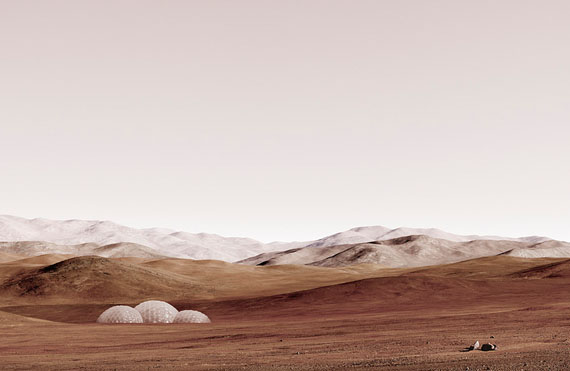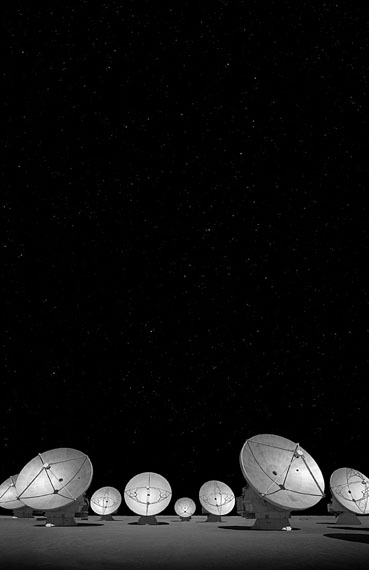
Michael Najjar »
ARCO 2014
Fair Presentation: 19 Feb – 23 Feb 2014
Tue 18 Feb
Galería Juan Silió
C/ Sol 45
39003 Santander

Michael Najjar
New work by the artist at Arco Madrid 2014
Galeria Juan Silió
19th - 23th February, 2014
Michael Najjar presents at Arco 2014 together with Galería Juan Silió new work from his "outer space" series.
The photographic and video works deal with the latest cutting-edge developments in space flight and the way they will shape our future life on earth and in earth’s near orbit.
The work aims to elucidate the cultural dimension of new technological developments in space travel and transpose it into a process of artistic transformation.
As one of the pioneer astronauts of Richard Branson’s Virgin Galactic, Michael will be embarking on SpaceShipTwo in one of its 2015 scheduled flights where he shall be the first artist in space.
For the first time one view at Arco fair are new works recently taken by the artist at the Atacama Desert in northern Chile.

"a.l.m.a." (2014)
The work "a.l.m.a." pictures the largest astronomical observatory on our planet, the Atacama Large Millimeter Array in the Atacama Desert in northern Chile. ALMA is a unique telescope array composed of 66 high precision antennas located in the extremely dry air of the Chajnantor plateau at 5000 meters altitude. Inaugurated in 2013 the telescope is expected to provide insight into the birth of stars in the early universe and detailed imaging of local star and planet formations. The artwork focuses on the extreme technical precision of the antennas and their relationship to their target area where the data comes from - the universe. Looking into the universe always means looking into our past. The ALMA antennas transform what is invisible and immaterial into something substantial which will give us a deeper understanding of who we are and where we come from.
"sands of mars" (2014)
The work "sands of mars" focuses on the idea of the future colonization of Mars. Originally a science fiction dream, it is now the subject of serious feasibility studies. Mars is unique in that it has the resources required to support a population of sufficient size to create a new local branch of human civilization. Colonization requires the establishment of permanent bases that have the potential for self-expansion, and inflatable habitats are one possible option for surface architecture on Mars. Geodesic spheres as invented by Buckminster Fuller in the fifties of the last century may serve as a perfect architectural concept for Mars habitats. The title of the work refers to Arthur C. Clarke´s first published novel in 1951 which depicts a future human settlement on Mars.
"interplanetary landscape" (2014)
The work "interplanetary landscape" focuses on the similarities between Mars and Earth. Geologic evidence suggests that Mars could have been warm and wet on a global scale in its distant past. Intense geologic activity has reshaped the surface of the Earth, erasing evidence of our earliest history. Martian rocks could be even older than rocks on the Earth, so exploring Mars may help us decipher the story of our own geologic evolution including the origins of life on earth. Yet the earth also has Mars-like landscapes such as the Atacama Desert in Chile. These extremely dry landscapes which closely resemble the surface of Mars are used by NASA and ESA as test sites for future Mars rovers. The work of the rovers is considered as the first step in the colonization of Mars. The artwork merges a photograph taken in the Atacama Desert with photographs taken by the Mars rover Curiosity which is currently active on the Martian surface, sending images and scientific data back to Earth on a daily basis.
www.juansilio.com
www.michaelnajjar.com
www.ifema.es
�
